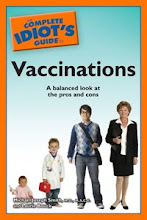The American middle class, created in large part by the G.I. bill after World War II, is suffering especially acutely in the current economy. A study in the journal Family Relations, for example, found that middle class shoppers are increasingly going to thrift shops and yard sales to buy basics they need such as clothes and small appliances.
Freecycle, an organization through which people give away or request household items, is growing in popularity; online coupon sites are everywhere. The only group that seems to have plenty of disposable income in this economy are childless young women.
But where can middle class families find the bargains in health care? The Census Bureau recently released a study that found that the number of people without health insurance rose from 46.3 million in 2008 to 50.7 million in 2009. Half of this increase is among people with incomes over $50,000 per year, who have limited access to government help with health care costs, as a Commonwealth Fund study pointed out recently.
Here in California, where unemployment tops 12%, health care is excruciatingly expensive. This is especially true in the San Francisco Bay Area, as Andrew Van Dam pointed out in a recent Covering Health blog post. For patients without access to government assistance, hospitals in some parts of the Bay Area bill about $35,000 per inpatient (versus about $19,000 per inpatient in Los Angeles County). Here's a Kaiser Health News map that lays out the statistics.
Health care reform helps, but the insurance exchanges that should provide affordable insurance options to those without good coverage aren't legislated until 2014 (although California is trying to fast-track that process in the state). Meanwhile, people who are uninsured or under insured are left to consult Dr. Google if they get sick. At least the doctor is affordable and always in, if not always right.
Subscribe to:
Post Comments (Atom)




No comments:
Post a Comment